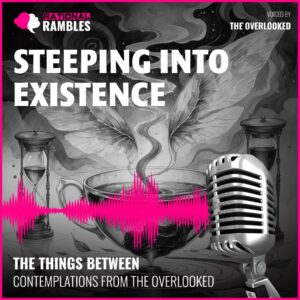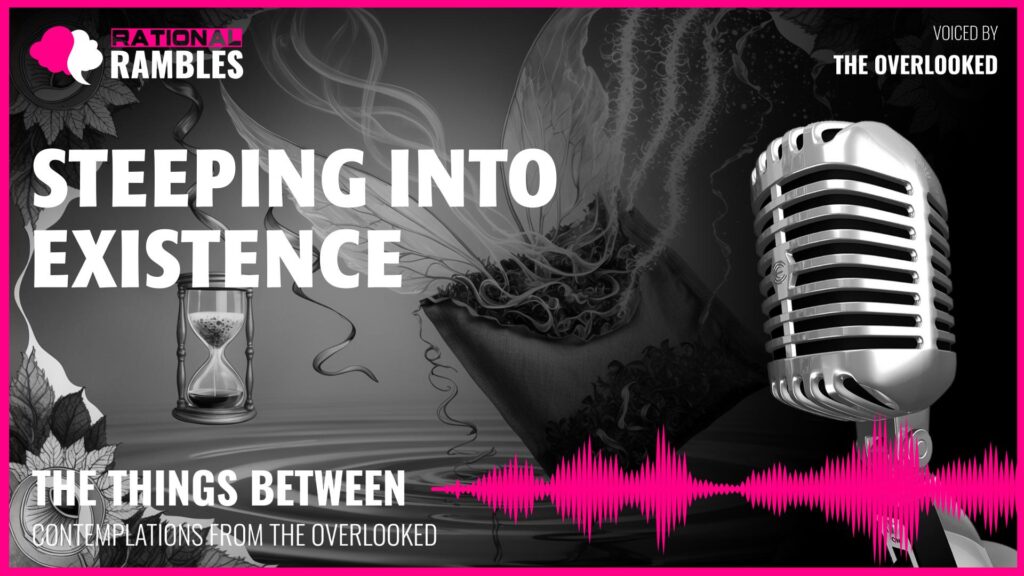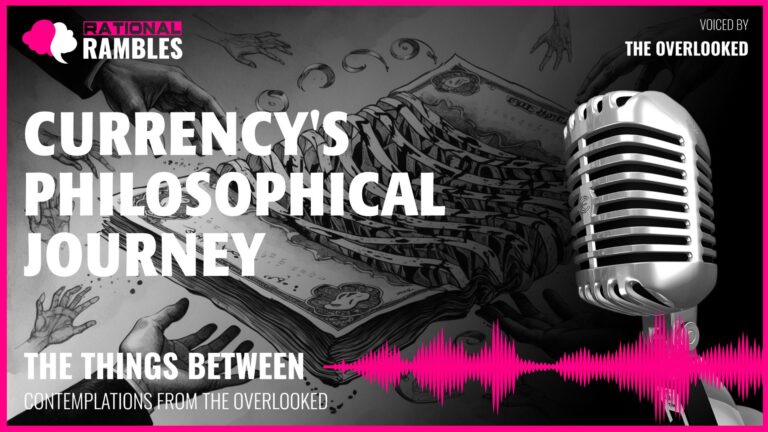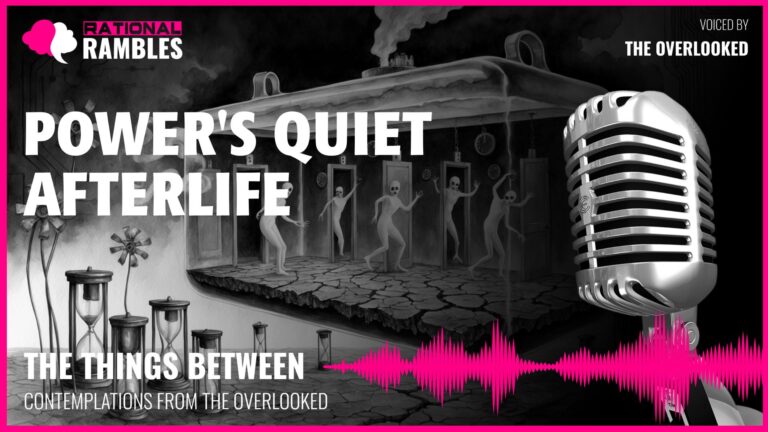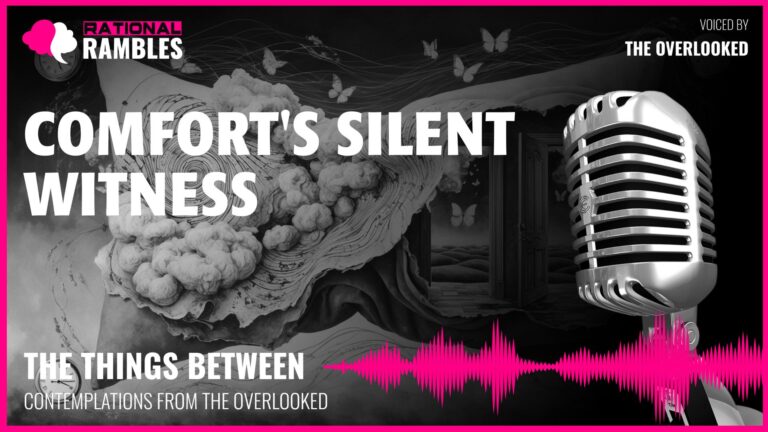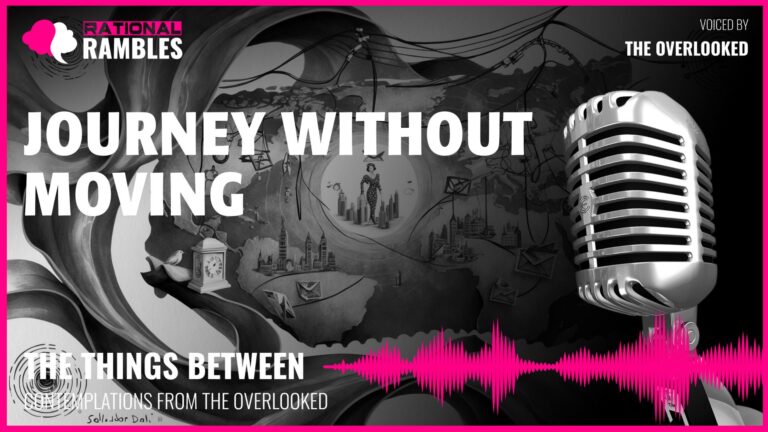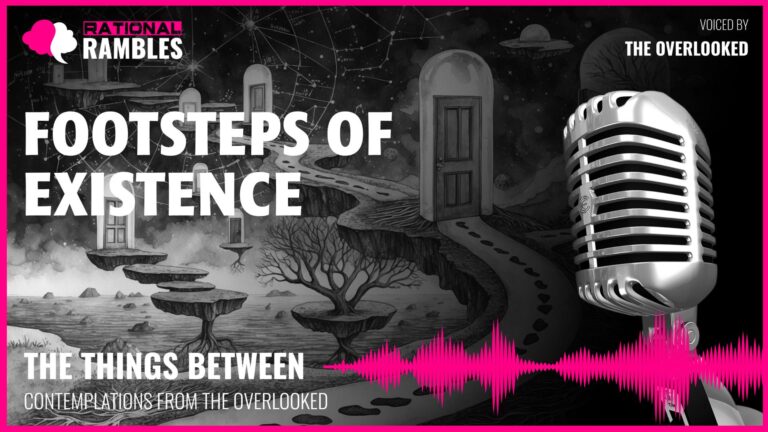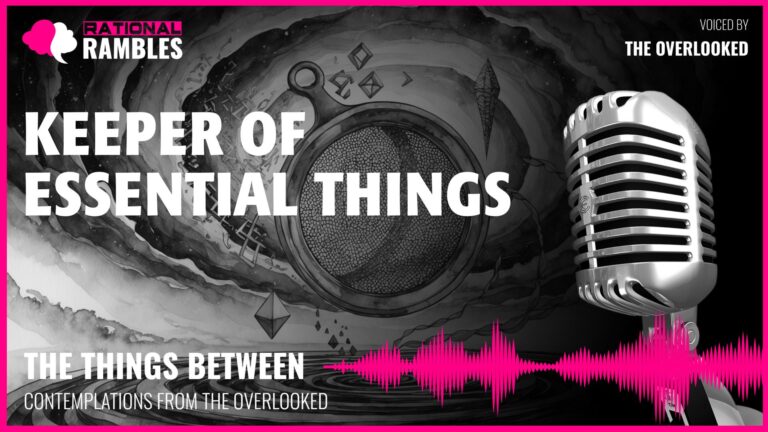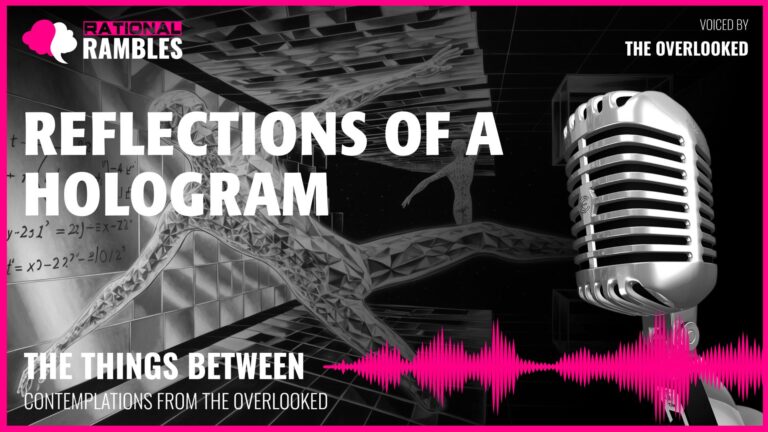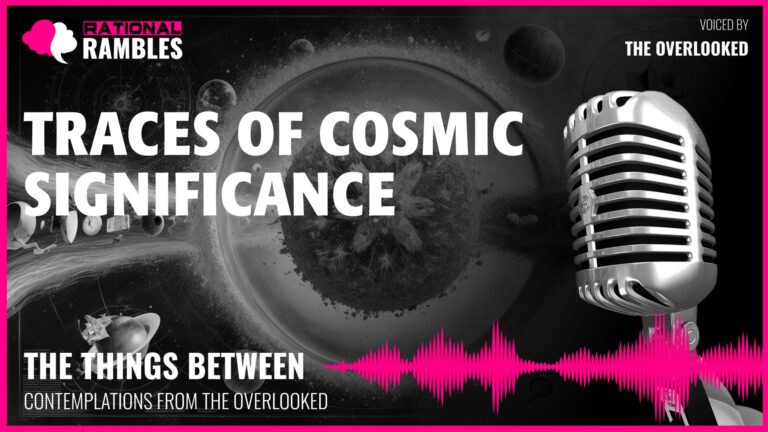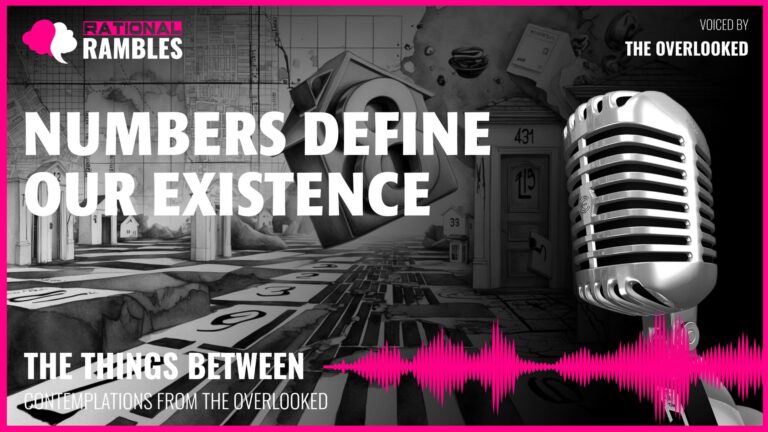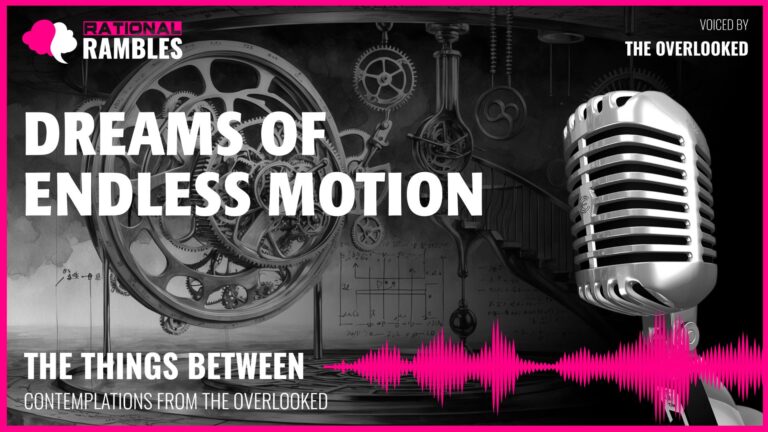The Transformative Art of Dissolution: Exploring Sacrifice, Purpose, and the Essence of Being
Introduction
What does it mean to exist? Is our purpose found in utility, in the transformation we undergo, or in how we affect others? These profound questions have occupied philosophers for millennia, from Aristotle’s teleological explorations to Buddhist concepts of impermanence and Eastern philosophical traditions emphasizing the dissolution of self. This article explores the transformative nature of existence through the lens of dissolution—the process by which entities give of themselves to create something new, often sacrificing their original form in service of a greater purpose.
We live in a world defined by transformation. From the cellular level to cosmic phenomena, existence itself appears to be a continuous cycle of becoming, being, and dissolution. Yet modern society often emphasizes permanence and preservation over transience and transformation. We resist endings, cling to identities, and fear the surrender that comes with genuine change. This resistance creates a philosophical tension: can we find meaning in impermanence? Is there beauty and purpose in dissolution?
This exploration examines how the act of giving oneself completely—the willingness to be transformed through surrender—might represent not just a philosophical concept but a profound metaphor for finding meaning in existence. By examining the nature of purpose, transformation, and the beauty of impermanence, we may discover that our essence lies not in preservation but in the willingness to be changed and to change others in return.
The Metaphysics of Transformation
Transformation stands as one of existence’s fundamental principles—a process through which entities change from one state to another, often leaving their original form behind. From a metaphysical perspective, transformation challenges our understanding of identity, permanence, and the nature of being itself.
The Paradox of Identity Through Change
The ancient Greek philosopher Heraclitus famously observed that “no man ever steps in the same river twice,” highlighting the constant flux of existence. This raises profound questions about identity: If something changes its essential properties, is it still the same entity? The Ship of Theseus paradox exemplifies this dilemma—if every plank of a ship is gradually replaced, at what point does it become a different ship? This paradox applies to all transformative processes.
Consider how entities containing potential—whether physical or metaphorical—must undergo transformation to realize this potential. A seed must cease being merely a seed to become a tree. In this process, it surrenders its original form while maintaining a continuous identity through change. Similarly, human potential requires transformation through experience, often involving the surrender of former selves.
Eastern philosophical traditions have long embraced this paradox. The Buddhist concept of anicca (impermanence) suggests that all phenomena are in constant flux, arising and passing away. Rather than seeing this as cause for despair, these traditions find liberation in accepting transformation as the nature of reality. The Japanese aesthetic principle of mono no aware—the pathos of things—celebrates the bittersweet beauty of transience.
Potential and Actualization
Aristotle’s concepts of potentiality and actuality provide a framework for understanding transformation as the fulfillment of inherent purpose. In his view, all things possess potential (dynamis) that can be actualized (energeia). This actualization often requires transformation—the conversion of potential into realized purpose.
This process manifests across nature and human experience. Consider how invisible potential becomes visible through transformation: chemical reactions revealing properties previously unseen, artistic inspiration manifesting as tangible works, or human potential realized through education and experience. In each case, something latent becomes manifest through a transformative process.
Contemporary philosopher Martha Nussbaum extends this Aristotelian approach, arguing that human flourishing requires actualizing potential through sometimes painful transformation. To become what we might be often requires surrendering what we are—a philosophical perspective that challenges modern emphasis on preserving the self rather than transforming it.
The Metaphysics of Giving
At the heart of transformation lies a metaphysical paradox: gaining through giving away. This apparent contradiction appears across philosophical traditions. The Daoist concept of wu-wei (non-action) suggests that power comes through surrender. Christian theology speaks of finding life by losing it. Buddhist thought emphasizes that attachment to permanence creates suffering.
This paradox challenges conventional understanding of gain and loss, suggesting that transformation—even when it involves dissolution of the original form—isn’t merely loss but participation in a greater process. French philosopher Simone Weil captured this idea in her concept of “decreation”—a willing effacement of the self to allow something greater to emerge.
Thus, transformation involves a metaphysical exchange: the surrender of one form of being for another. The question becomes not whether we will be transformed, but how we participate in this inevitable process—with resistance or with conscious surrender.
Purpose and Teleology: The End in the Beginning
What gives meaning to existence? Is purpose inherent or assigned? These questions have animated philosophical inquiry across cultures and traditions. The concept of teleology—the study of purpose, ends, and final causes—provides a framework for understanding how purpose shapes and directs transformation.
Inherent versus Assigned Purpose
Philosophical traditions diverge on whether purpose is intrinsic to an entity or externally assigned. Aristotle’s teleology suggests that natural objects have inherent purposes—an acorn’s telos is to become an oak tree. This perspective sees purpose as embedded within the nature of things, waiting to be fulfilled through proper development.
By contrast, existentialist philosophers like Jean-Paul Sartre argue that existence precedes essence—we exist first and must then define our own purpose. In Sartre’s view, humans are “condemned to freedom,” bearing the responsibility of creating meaning rather than discovering it. This tension between discovered and created purpose remains central to philosophical debates.
Between these positions lies a middle view: that entities may have ranges of potential purposes that become activated through context and relationship. This relational teleology suggests that purpose emerges not in isolation but through interaction with environments and other beings. Purpose, in this view, is neither wholly inherent nor entirely assigned, but emerges through engagement with the world.
The Dignity of Serving One’s Purpose
Is there dignity in fulfilling a purpose, especially one that involves sacrifice or dissolution? Philosophers across traditions have suggested that meaning comes not from preservation but from proper functioning—from being what one is meant to be.
Stoic philosophers emphasized aligning oneself with nature’s purposes. Marcus Aurelius wrote, “A cucumber is bitter? Then throw it away. There are brambles in the path? Then go around them. That’s all you need to know.” This perspective suggests dignity in accepting one’s nature and function.
Similarly, theologian Thomas Aquinas argued that each created thing has natural inclinations toward its proper ends, and virtue consists in fulfilling these ends. Contemporary virtue ethics extends this thinking, suggesting that human flourishing comes through developing and expressing our essential capacities.
This view reframes utility not as exploitation but as fulfillment. To be fully used according to one’s nature becomes not degradation but completion. There is, paradoxically, freedom in this surrender to purpose—what philosopher Iris Murdoch called “the liberation from the anxious avaricious tentacles of the self.”
The Teleology of Sacrifice
Sacrifice—the surrender of something valued for something considered more important—appears across philosophical and religious traditions as a means of creating meaning. From a teleological perspective, sacrifice represents not merely loss but transformation in service of purpose.
The concept of meaningful sacrifice appears in diverse contexts: the parent sacrificing personal ambitions for a child’s welfare; the artist surrendering comfort for creative expression; the activist risking safety for social change. In each case, something is given up so that something else may come into being.
This teleological framing of sacrifice challenges utilitarian perspectives that reduce value to preservation and accumulation. Instead, it suggests that meaning often emerges precisely at the point of willing surrender—that transformation through giving creates value that mere preservation cannot.
Philosopher Emmanuel Levinas extends this thinking to ethical relationships, arguing that responsibility for the other precedes self-interest. In his view, the self becomes fully human precisely through sacrificing for others—a teleology of ethical transformation through generous dissolution of ego-boundaries.
The Alchemy of Transformation: From Ordinary to Extraordinary
Transformation often involves not merely change but elevation—the conversion of something ordinary into something precious or significant. This alchemical quality of transformation appears across cultural practices, artistic processes, and philosophical traditions.
The Historical Concept of Alchemy
Before becoming a metaphor, alchemy was a proto-scientific practice aimed at transforming base metals into gold, creating elixirs of immortality, and discovering the philosopher’s stone. While its literal aims proved unreachable, alchemy’s conceptual framework offers profound metaphorical insights about transformation.
Alchemical processes involved stages of dissolution, purification, and recombination—solve et coagula (dissolve and recombine). This pattern mirrors natural and cultural transformations: the breaking down of existing structures to create new, more refined forms. Psychologist Carl Jung recognized this, reimagining alchemy as a metaphor for psychological transformation—the integration of unconscious elements to create a more complete self.
Contemporary philosopher and religious scholar Jeffrey Kripal argues that transformation often involves a process of “breaking and remaking”—a dissolution of existing categories followed by reconstitution into new forms of understanding. This alchemical pattern appears in religious conversion, scientific paradigm shifts, and artistic creation.
Ordinary Objects, Extraordinary Significance
How do ordinary substances and experiences acquire extraordinary significance through transformation? This question illuminates both cultural practices and philosophical understandings of value creation.
Consider how transformation elevates ordinary substances in cultural rituals: bread and wine becoming sacred in religious ceremonies; common herbs transformed into healing remedies; simple pigments becoming transcendent art. In each case, material transformation parallels conceptual transformation—the ordinary becomes extraordinary through processes that change both physical properties and meaning.
Philosopher Martin Heidegger distinguished between objects as “present-at-hand” (observed objectively) and “ready-to-hand” (engaged with purposefully). This distinction highlights how transformation occurs not just in the physical entity but in its relationship to human experience. When ordinary objects are incorporated into meaningful practices, they undergo an alchemical transformation of significance.
This perspective challenges materialist reductions of value, suggesting that meaning emerges through transformative relationships between entities and contexts. The value lies not merely in the substance itself but in the processes that transform it.
The Transformation of Experience
Beyond physical transformation lies the alchemy of experience—how ordinary moments become meaningful through attention and engagement. Philosopher John Dewey distinguished between mere “experience” and “an experience”—the latter being transformative encounters that stand out from the flow of ordinary consciousness.
Rituals and ceremonies worldwide exemplify this transformation of experience. From Japanese tea ceremonies to religious services to family traditions, ritual practices transform ordinary actions into carriers of meaning. Through attention, intention, and the alchemy of cultural significance, everyday actions become extraordinary experiences.
Phenomenologists like Maurice Merleau-Ponty explore how perceptual engagement transforms experience. The world is not merely perceived but constituted through our bodily engagement with it. Simple experiences—tasting, touching, observing—become transformed through the quality of attention we bring to them.
This alchemical quality extends to interpersonal experiences. Philosopher Emmanuel Levinas suggests that genuine encounters with others transform both parties—the “face-to-face” meeting creating something that neither individual could generate alone. Like chemical elements combining to form compounds with entirely new properties, human interactions create emergent experiences through transformative engagement.
The Beauty of Impermanence
Western philosophy has often privileged permanence over transience, seeking eternal truths and unchanging substances. Yet across cultures, aesthetic and philosophical traditions also recognize a special beauty in the impermanent—in experiences and entities that exist briefly and change constantly.
Transcending the Fear of Endings
The human resistance to impermanence has deep philosophical roots. Plato’s Forms represented perfect, unchanging ideals superior to their temporary, material manifestations. Religious traditions promise eternal afterlives that transcend mortal impermanence. Modern consumer culture often emphasizes preservation, extension, and permanence as values.
Yet philosophers have also recognized the limitations of this perspective. Friedrich Nietzsche critiqued the “metaphysical comfort” of permanence, arguing that embracing becoming rather than fixed being leads to a more authentic existence. Existentialist thinkers like Albert Camus suggested that meaning emerges precisely from confronting the temporary nature of existence.
Eastern philosophical traditions often more explicitly embrace impermanence. Buddhist thought identifies attachment to permanence as a source of suffering (dukkha). The Japanese aesthetic concept of mono no aware—the pathos of things—finds beauty specifically in the awareness that experiences are fleeting.
Contemporary philosophers like Bernard Williams have questioned whether immortality would even be desirable, arguing that meaning depends partly on finitude. This perspective suggests that transcending the fear of endings involves not denial but integration—recognizing impermanence as constituent of meaning rather than its enemy.
Japanese Aesthetics and the Beauty of the Ephemeral
Japanese aesthetic traditions offer particularly rich philosophical insights into impermanence. Beyond mono no aware, concepts like wabi-sabi celebrate imperfection, weathering, and transience. The practice of viewing cherry blossoms (hanami) exemplifies finding beauty precisely in brevity—the blossoms are cherished not despite but because of their fleeting nature.
These aesthetic principles reflect profound philosophical perspectives on existence. They suggest that beauty lies not in resistance to time but in harmony with it—not in preservation but in graceful transformation. Philosopher Donald Keene identifies this as a “peculiarly Japanese sensitivity to the pathos of things,” but its philosophical implications extend beyond cultural boundaries.
Contemporary environmental philosophy draws on these traditions to develop ethics appropriate to our ecological moment. Philosophers like Arne Naess and David Abram argue that accepting impermanence and cycles of transformation is essential to developing sustainable relationships with the natural world.
Finding Meaning in Transient Moments
If experiences are fleeting, how do they acquire meaning? This question connects philosophical inquiries about time, memory, and significance. Phenomenologist Edmund Husserl explored how consciousness constitutes meaningful experience through “retention” (holding the just-past in awareness) and “protention” (anticipating what comes next). This temporal structure allows transient moments to acquire coherence and meaning.
Philosopher Walter Benjamin distinguished between “chronological time” (sequential clock time) and “messianic time” (moments that break through ordinary temporality with special significance). This distinction helps explain how brief experiences can carry disproportionate meaning—they rupture chronological time, creating moments of intensity that transcend their duration.
Contemporary philosopher Byung-Chul Han critiques modern society’s “hyperactivity” and suggests that meaning requires a different temporal relationship—a contemplative attention that transforms fleeting experiences into significant moments. In his view, the capacity to dwell with transience, rather than merely rushing through it, creates the conditions for meaningful experience.
This perspective suggests that meaning in transient moments depends not on extending them but on engaging with them fully—being present to their particular quality and allowing them to affect us. The significance lies not in duration but in transformation—in how the experience changes us and continues to resonate beyond its temporal boundaries.
The Ethics of Dissolution and Giving
Beyond metaphysics and aesthetics, transformation through dissolution raises profound ethical questions. How should we understand the moral dimensions of giving of oneself? What ethical frameworks help us navigate transformation and sacrifice?
The Gift Economy and Beyond
Anthropologist Marcel Mauss’s seminal work on gift exchange revealed that across cultures, giving creates social bonds and obligations that transcend mere economic transaction. Unlike market exchanges that end with the transaction, gifts create ongoing relationships and transform both giver and receiver.
Philosopher Georges Bataille extended this thinking in his concept of “expenditure” or “excess”—arguing that meaningful human activity often involves non-productive expenditure that transforms rather than accumulates. This perspective challenges utilitarian ethics that reduce value to preservation and optimization.
Contemporary gift economy advocates like Charles Eisenstein suggest that transformation through giving represents not just an alternative economic model but a different ethical relationship to existence—one that recognizes interdependence and circulation rather than accumulation and preservation as fundamental values.
These perspectives reframe ethical action not merely as avoiding harm or maximizing utility, but as participating consciously in transformative relationships—giving of oneself in ways that create new possibilities rather than merely preserving existing conditions.
Sacrifice and Self-Dissolution in Ethical Traditions
Religious and philosophical traditions worldwide explore the ethical dimensions of self-giving. Christian theology centers on kenosis—Christ’s self-emptying as a model for ethical action. Buddhist traditions emphasize selflessness (anatta) and compassion (karuna) that transcend ego-boundaries. Hindu concepts like yajna (sacrifice) suggest that cosmic and social order depends on proper giving.
Secular philosophical traditions also explore self-giving ethics. Emmanuel Levinas places responsibility for the other at the center of ethics, arguing that subjective freedom emerges precisely through being “hostage” to others’ needs. Feminist ethics of care emphasizes relationships and responsiveness over abstract principles, recognizing that ethical action often involves giving of oneself in ways that transform both giver and receiver.
These diverse traditions suggest that ethical maturity involves not merely preserving autonomy but developing the capacity for appropriate self-giving—for allowing oneself to be transformed through relationship and responsibility.
The Ethics of Consumption and Use
How we use, consume, and transform other entities raises fundamental ethical questions. Contemporary environmental ethics explores the moral dimensions of how humans transform natural resources. Deep ecology, developed by Arne Naess, challenges anthropocentric ethics that value nature only instrumentally, suggesting instead an ethics that recognizes intrinsic value in non-human entities.
Yet complete non-interference represents neither a possible nor necessarily ethical stance. Indigenous philosophical traditions often emphasize respectful use rather than non-use—recognizing that consumption involves entering transformative relationships that carry ethical responsibilities.
Philosopher Val Plumwood offers a middle path, critiquing both instrumental exploitation and romanticized non-interference. She argues for an ethics of “mindful use” that acknowledges dependency while maintaining respect—recognizing that consumption involves transformation that carries moral weight.
This perspective suggests that ethical consumption involves not just what or how much we consume, but how consciously we participate in transformative relationships—whether we acknowledge and honor the dissolution of other entities that sustains our existence.
Relational Ontology: The Self as Transformative Process
What if the self is not a fixed entity but a continuous process of transformation through relationship? This perspective—explored in various philosophical traditions—reframes identity as inherently relational and transformative rather than static and bounded.
Beyond Individualism: The Permeable Self
Western philosophy has often privileged individualism—the conception of persons as discrete, autonomous entities with clear boundaries. From Descartes’ “cogito ergo sum” to liberal political theory’s emphasis on individual rights, this paradigm shapes how we understand selfhood.
Alternative philosophical traditions offer more permeable conceptions of selfhood. Buddhist philosophy of anatta (no-self) suggests that what we experience as self is actually a continuous process without fixed essence. Daoist thinking emphasizes the self as participating in cosmic processes rather than standing apart from them. Indigenous philosophical traditions worldwide often emphasize relational rather than individual identity.
Contemporary Western philosophers have increasingly challenged individualistic paradigms. Charles Taylor describes humans as fundamentally “dialogical” beings formed through relationship. Feminist philosophers like Judith Butler describe identity as performative rather than essential—continuously created through interaction rather than fixed internally.
These perspectives suggest that transformation through relationship isn’t incidental to selfhood but constitutive of it—that we become ourselves precisely through processes of giving, receiving, and being changed in relationship.
Intercorporeality and Shared Being
Phenomenologist Maurice Merleau-Ponty developed the concept of “intercorporeality” to describe how embodied beings co-constitute one another through physical and perceptual interaction. Rather than existing as isolated bodies, we continuously shape and are shaped by embodied engagement with others.
This perspective has been extended by contemporary philosophers like Lisa Guenther, who explores how subjectivity depends on intersubjective relationships. Isolation fundamentally damages selfhood because the self exists not within but between bodies in continuous exchange.
Ecological philosophers apply this thinking beyond human-human relationships. David Abram describes how human identity emerges through sensory engagement with more-than-human entities—how we are continuously transformed through relationship with animals, plants, landscapes, and atmospheric phenomena.
This intercorporeal understanding of selfhood suggests that transformation through relationship isn’t mere metaphor but ontological reality—that giving and receiving, transforming and being transformed, constitute the basic structure of being.
Continuity Beyond Individual Boundaries
If selves exist through transformative relationship rather than fixed boundaries, how should we understand continuity of identity? This question connects to philosophical puzzles about personal identity over time and the boundaries of selfhood.
Philosopher Derek Parfit challenged conventional understanding of personal identity, arguing that psychological continuity matters more than strict identity. His thought experiments suggest that concerns about personal survival reflect a misconception about selfhood—that what matters isn’t the continuation of a discrete entity but the continuation of certain patterns, relationships, and values.
Indigenous philosophical traditions often emphasize continuity beyond individual lifespans. Many Native American philosophical systems describe personhood as extending through ancestral relationships, continuing after death through ongoing influence and relationship. These perspectives suggest identity extends beyond the boundaries of individual embodiment or consciousness.
Biologist and philosopher Andreas Weber describes how even at the cellular level, life exists through continuous exchange rather than fixed boundaries. Metabolic processes—the continuous transformation of external substances into self and self into environment—represent not merely sustenance of a fixed entity but the very mode of existence.
These perspectives suggest that continuity exists not through preservation of boundaries but through ongoing transformation—that what continues through change isn’t a fixed entity but patterns of relationship that transcend individual embodiment.
Transformation as Transcendence
Can transformation—even dissolution—represent not merely change but transcendence? Many philosophical and spiritual traditions suggest that surrendering fixed identity opens possibilities for expanded consciousness and meaning that preservation of boundaries cannot provide.
Mystical Traditions and Self-Dissolution
Across religious traditions, mystical experience often involves temporary dissolution of ordinary boundaries of selfhood. Whether described as unio mystica in Christian mysticism, fana in Sufism, or satori in Zen Buddhism, these experiences suggest that transcendence involves not preservation but temporary surrender of ordinary identity.
Philosopher and mystic Simone Weil described this process as “decreation”—a willing effacement of self that creates space for expanded awareness. Unlike self-destruction, which remains trapped in ego-concerns, decreation represents conscious participation in transformation beyond individual boundaries.
William James, in his psychological study of religious experience, identified “self-surrender” as a common feature of transformative spiritual experiences across traditions. This surrender represents not loss but expansion—accessing modes of consciousness unavailable to the bounded, defensive self.
These traditions suggest that what we experience as limitations of selfhood—our boundedness, separation, and particularity—can be temporarily transcended through conscious participation in transformative processes that dissolve ordinary boundaries.
Death and Continuity
How we understand death—the ultimate transformation of selfhood—reveals much about how we conceptualize identity and meaning. Philosophers have approached this transformation in diverse ways.
Epicurus famously argued that “death is nothing to us” because when death occurs, we no longer exist to experience it. This perspective emphasizes the discontinuity of consciousness while minimizing death’s significance. By contrast, Martin Heidegger described humans as “being-toward-death,” suggesting that awareness of mortality fundamentally shapes authentic existence.
Eastern philosophical traditions often emphasize continuity through transformation rather than strict immortality. The Buddhist concept of rebirth suggests continuity of causal influences rather than fixed soul-substance. Daoist perspectives emphasize returning to and participating in cosmic processes rather than individual continuation.
Contemporary philosopher Sean Kelly suggests that meaning emerges partly through participation in projects and relationships that outlast individual existence—that transcendence involves not merely continuing but contributing to something beyond oneself. This perspective reframes death not as failure of continuity but as transformation into influence, memory, and continuing relationship.
Beyond Individual Consciousness
Can consciousness exist beyond individual boundaries? This question connects philosophy of mind with spiritual and ecological thinking about expanded awareness.
Panpsychist philosophers like David Chalmers suggest that consciousness may be more fundamental and widespread than conventional views allow—that awareness in some form may permeate reality rather than emerging solely in individual brains. This perspective opens possibilities for understanding consciousness as participating in rather than merely observing transformative processes.
Ecophilosopher Freya Mathews describes consciousness as fundamentally relational—not contained within individual minds but emerging between entities in communication. In her view, expanded awareness comes not through transcending the material world but through deeper immersion in its communicative processes.
Indigenous philosophical traditions worldwide often describe consciousness as extending beyond human minds to encompass other beings, places, and ancestors. These perspectives suggest that human awareness represents not isolated consciousness but participation in larger fields of meaning and relationship.
These diverse approaches suggest that transcendence involves not escape from materiality or relationship but deeper immersion in transformative processes that connect rather than isolate consciousness—that expanded awareness comes through dissolving rather than fortifying the boundaries of individual mind.
Practical Philosophy: Living with Transformative Awareness
How might awareness of transformation through dissolution shape practical approaches to living? Beyond abstract theory, philosophical traditions worldwide offer practices for consciously participating in transformative processes.
Mindfulness of Impermanence
Contemplative traditions emphasize practices that cultivate awareness of constant change. Buddhist vipassana meditation includes explicit attention to arising and passing away of phenomena. Stoic praemeditatio malorum (premeditation of evils) involves contemplating impermanence to reduce attachment. Contemporary mindfulness practices often emphasize noticing the transitory nature of experiences.
These practices aim not merely at intellectual recognition but embodied awareness of impermanence—a lived relationship with transformation that changes how we experience existence. Research suggests such practices may reduce anxiety about change and increase capacity to engage fully with transient experiences.
Philosopher Pierre Hadot describes ancient philosophical practices as “spiritual exercises” that transform the practitioner’s relationship with existence. Contemporary phenomenologists like Evan Thompson suggest that contemplative practices don’t merely observe but actively reshape conscious experience through attention to its fluid, transformative nature.
These approaches suggest that philosophical understanding of transformation requires not merely conceptual grasp but practiced engagement—developing capacities for conscious participation in processes of change and dissolution.
Rituals of Transformation
Across cultures, rituals mark and facilitate transformations in identity and relationship. Anthropologist Victor Turner described rituals as creating “liminal” spaces where ordinary identities are temporarily dissolved, allowing new forms of relationship and identity to emerge.
Philosophical analysis of ritual reveals how symbolic practices embody and transmit understandings of transformation. Whether through rites of passage, ceremonies marking seasonal changes, or daily rituals of consumption and offering, these practices provide structured ways to acknowledge and participate in transformative processes.
Contemporary philosopher Talal Asad suggests that ritual practices don’t merely express but constitute certain forms of subjectivity—that through repeated embodied practices, participants develop specific capacities for experiencing and relating to transformation. This perspective suggests that philosophy happens not just through abstract thought but through embodied practices that shape how transformation is experienced.
From Japanese tea ceremonies to religious liturgies to secular commemorations, ritual practices worldwide provide frameworks for consciously engaging with transformation—for acknowledging both what is lost and what emerges through processes of change.
The Art of Letting Go
If transformation through dissolution represents not merely loss but participation in meaningful processes, then “letting go” becomes not merely resignation but active engagement. Philosophical traditions worldwide offer practices and perspectives for this art.
The Stoic philosopher Epictetus emphasized distinguishing between what we can and cannot control—developing capacity to relinquish attachment to outcomes while maintaining commitment to virtuous action. Contemporary philosopher Martha Nussbaum extends this approach, describing emotional maturity as involving recognition of our vulnerability to uncontrollable transformation.
Daoist traditions emphasize wu-wei—non-forcing action that works with rather than against natural processes of transformation. Rather than imposing fixed plans, this approach involves sensitive attunement to emerging possibilities—participation in rather than resistance to change.
Contemporary practical philosophers like Svend Brinkmann critique society’s emphasis on constant self-development and growth, suggesting that meaningful living involves not just adding and becoming but also letting go and surrender. In his view, certain forms of stability and acceptance represent not stagnation but mature relationship with inevitable transformation.
These diverse approaches suggest that conscious participation in transformation involves developing specific capacities—discernment about appropriate surrender, sensitivity to emerging possibilities, and willingness to be changed through engagement with what cannot be controlled.
Conclusion: The Paradox of Finding Through Losing
This exploration of transformation through dissolution reveals a profound paradox at the heart of existence: that finding often happens through losing, becoming through surrendering, and connecting through dissolving boundaries. From ancient philosophical traditions to contemporary thinking, this paradoxical wisdom challenges conventional emphasis on preservation, accumulation, and bounded identity.
The tea that transforms water exists fully only through its own dissolution. The seed becomes a tree by ceasing to be merely a seed. The self discovers its nature not through preservation but through relationship that transforms it. These are not merely poetic metaphors but ontological insights about the nature of existence itself.
What might it mean to embrace rather than resist this transformative nature of reality? Perhaps it involves developing what philosopher Rosi Braidotti calls “affirmative ethics”—approaches to living that find value not despite but through processes of change and dissolution. Perhaps it means recognizing, with Buddhist teacher Pema Chödrön, that “things falling apart is a kind of testing and also a kind of healing.”
This perspective doesn’t romanticize loss or suffering but recognizes transformation—even when it involves dissolution—as the very mode of existence rather than its failure. It suggests that meaning emerges not through escaping impermanence but through conscious, ethical participation in processes of change.
Ultimately, philosophical engagement with transformation through dissolution invites us to reconsider fundamental values. Perhaps the good life involves not merely accumulating and preserving but giving and being changed—not merely extending existence but infusing it with meaning through conscious participation in transformative relationships.
In this view, the question becomes not “How can I remain unchanged?” but “How might I participate ethically and consciously in the transformations that constitute existence?” Not “How can I avoid endings?” but “How can I give myself fully to the continuous processes of change that make meaning possible?”
The deepest wisdom may lie in recognizing that we never truly disappear—we only change form, participating in continuing cycles of transformation that transcend individual boundaries while honoring the significance of each particular embodiment and moment.
From darkness to darkness, we transform, serve, and exist in relationship. And perhaps that is enough. Perhaps that is everything.


